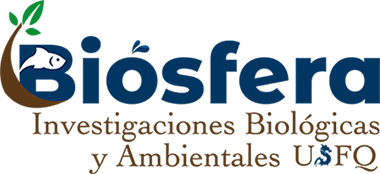FIELDTRIP ALONG THE CURARAY RIVER

It was the last field day of a series of expeditions throughout the Curaray basin, where we aimed to document its attractive ichthyofauna. We left the Kichwa community Ninamarum really early in the morning on a small peke peke, with the intention of being the first to arrive to the Lorocachi airstrip. Only one plane a week leaves to Shell Mera and you cannot buy the tickets in advance. If the small plane fills up before you arrive, it doesn’t matter if you come from far away or if you are very persuasive, because nothing is going to prevent you from having to stay another week, waiting for the next flight.
The plane that was supposed to take us did not arrive at the time it should have. With no one to tell us why, all that was left was to wait for news. A few hours passed and each one of us, wearing the last remaining garments we had left since the rest of the luggage was sent in boats back to Arajuno, began to wonder if the plane was going to appear at all. We had been told that, on occasions, bad weather prevented the airplane from leaving the other runway and, indeed, our plane never left Shell’s airport.
We had to hitchhike on a plane that was carrying food for the schools in the area. We traveled to a track on the Villano River, sitting on the floor of the plane like lumps, but super happy. There, we were supposed to load gas and leave for Mera, which was less than half an hour away by plane.
The clouds began to turn black and the pilots told us that we had to leave urgently or the storm would catch us and then we would be stuck there. We hopped in, the pilot started to gain velocity and we heard a super loud Crrrack. A brake had been released. The pilot had to make abrupt zigzag movement to stop the plane and we, on the verge of fainting, had to get off, unload the equipment and find a way to return by bus.
We waited another hour for the last bus that was going to Mera. The trip, which should have been 30 minutes, turned into 2, 3 or 5 hours by bus, I don’t quite remember how long, because it felt like 10.
Out of all the bad luck, we had the best of luck that day.
The logistics of a scientific trip to remote locations are complex and, very often, full of unforeseen events. With more bliss than discontents we ended the long day that, to date, has been the best time in the field that I have ever had. Everything; the food, the people, the landscape, the river monsters, the children, the eternal journeys, the sun and the leeches, are what make field work more than a scientific operation, an entire odyssey.
By: Karla Barragán Figueroa
Photo Credit: Karla Barragán Figueroa




